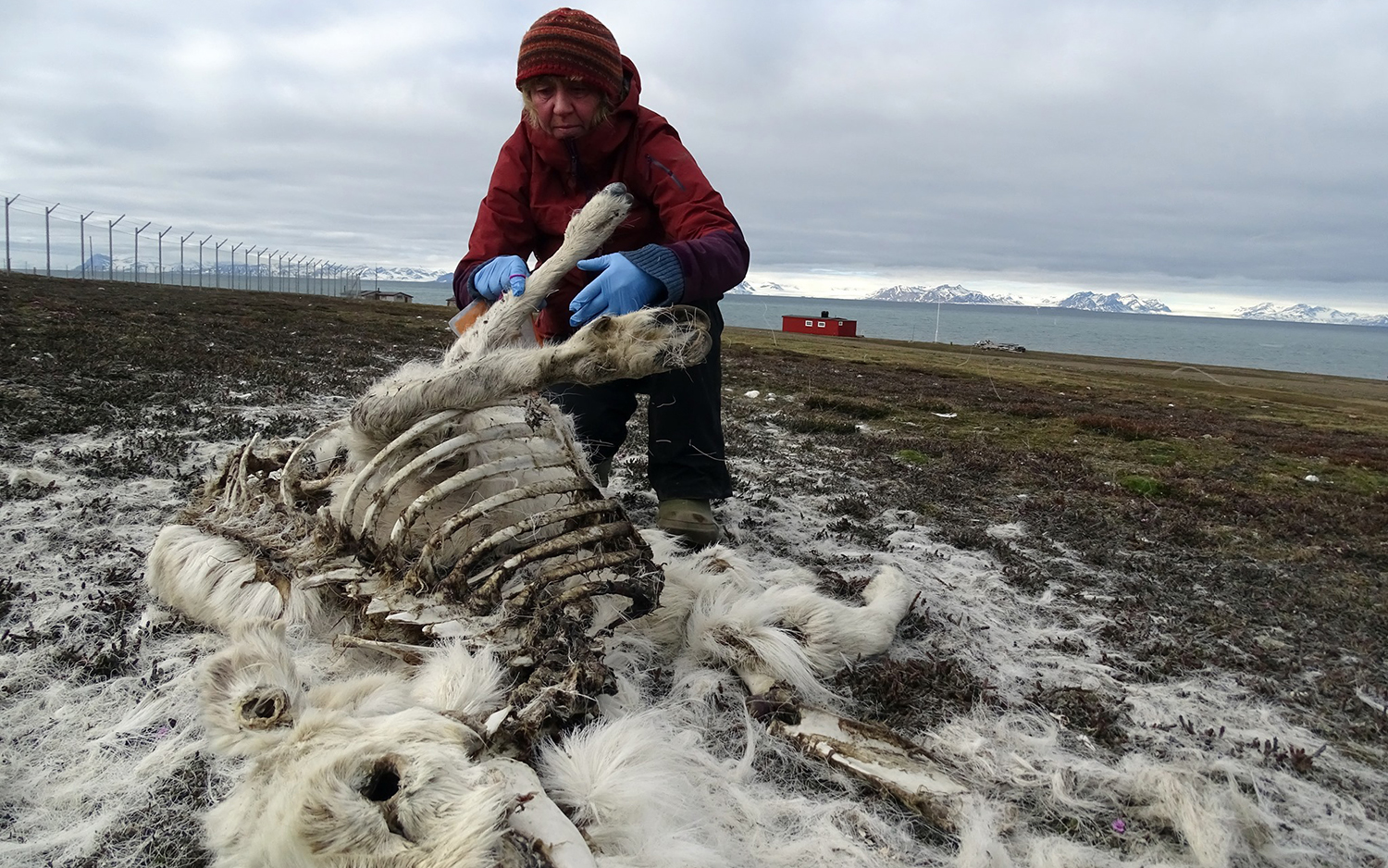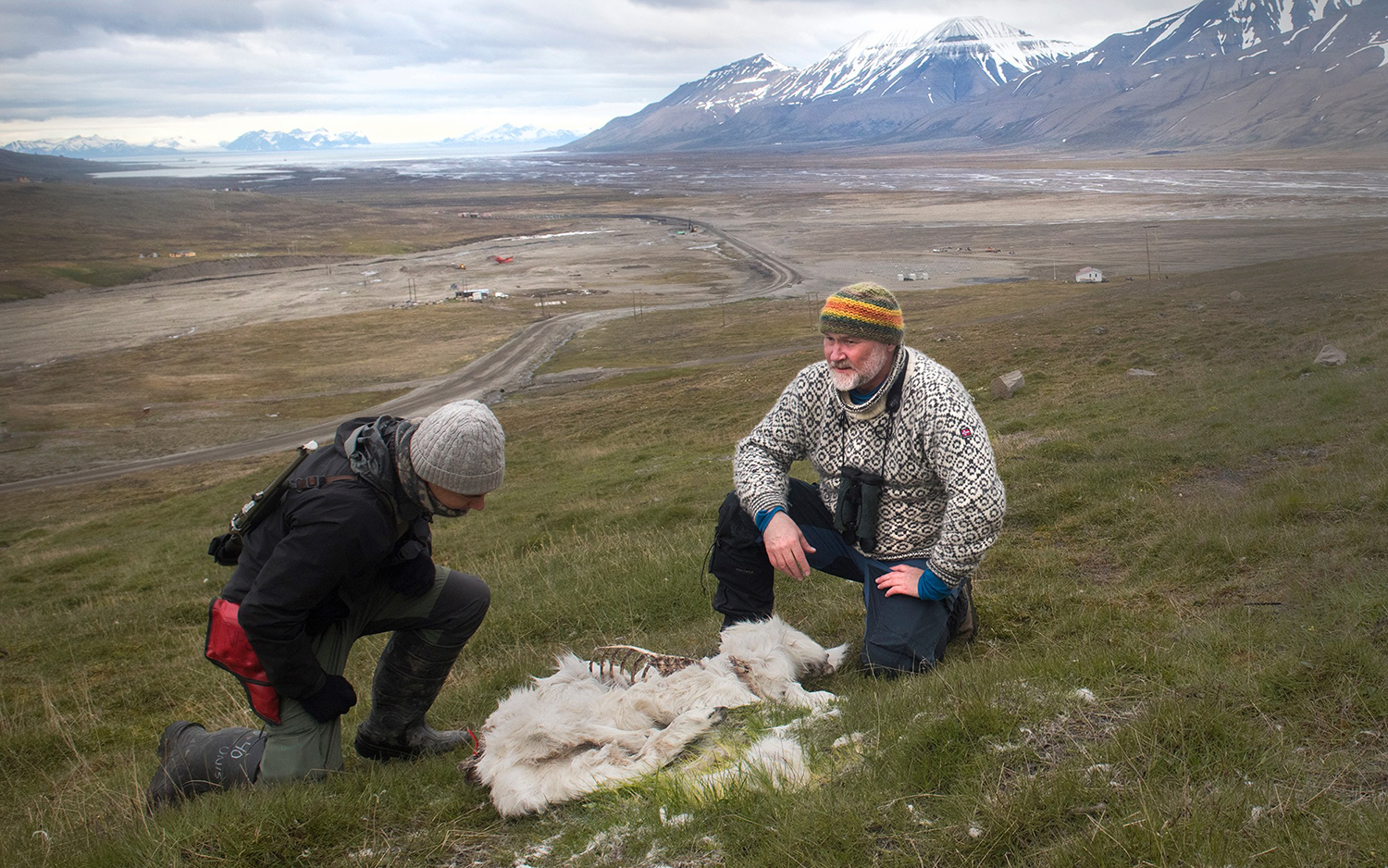More Than 200 Reindeer Found Dead in Norway, Starved by Climate Change

Researchers recently found more than 200 dead reindeer on the island of Svalbard in Norway; the animals starved to death due to climate change, which is disrupting their access to the plants that they typically eat.
Every year, ecologists with the Norwegian Polar Institute (NPI) survey reindeer populations in Svalbard, an archipelago of glaciers and frozen tundra that lies between Norway and the North Pole.
The findings from the scientists' 10-week investigation were grim: Reindeer population numbers were down, and the individual animals were much thinner than they should have been. And hundreds of reindeer carcasses showed signs of starvation, Norway's national news outlet, NRK, reported on July 27. [6 Surprising Facts About Reindeer]
"It's scary to find so many dead animals," Åshild Ønvik Pedersen, an NPI terrestrial ecologist, told NRK. Reindeer in Svalbard are a subspecies, Rangifer tarandus platyrhynchus, and they are short-legged, with endearingly small, rounded heads. Males are slightly larger than females, measuring about 5 feet (1.6 meters) long and weighing up to 198 lbs. (90 kilograms), according to NPI.
Climate change is bringing warmer temperatures to Svalbard, which means more precipitation. And heavy rainfall in December is thought to be responsible for the unusually high number of reindeer deaths, the researchers wrote on May 28 on the NPI website.
After the December rain hit the ground, the precipitation froze, creating "tundra ice caps," a thick layer of ice that prevented reindeer from reaching vegetation in their usual winter grazing pastures. This forced the animals to dig pits in shoreline snow to find seaweed and kelp, which are less nutritious than the reindeer's usual fare.
The scientists also observed reindeer grazing on cliffs, which the animals rarely do during winters when food is more plentiful. Rocky, mountainous regions on Svalbard don't have much plant life, and this "mountain goat strategy" is risky for the reindeer, because the cliffs are very steep. But during lean years, about 50% of the reindeer climb to altitudes of nearly 1,000 feet (300 m) in a desperate search for food, the researchers reported.
Get the world’s most fascinating discoveries delivered straight to your inbox.
With their pastures locked in ice, the reindeer also have to travel farther to find food. And when there is little to eat, the youngest and oldest animals are usually the first to die, Pedersen told NRK.
"Some of the mortality is natural because there were so many calves last year," she said. "But the large number we see now is due to heavy rainfall, which is due to global warming."
- Photos: Ancient Arrows from Reindeer Hunters Found in Norway
- 10 Climate Myths Busted
- 8 Ways Global Warming Is Already Changing the World
Originally published on Live Science.

Mindy Weisberger is a science journalist and author of "Rise of the Zombie Bugs: The Surprising Science of Parasitic Mind-Control" (Hopkins Press). She formerly edited for Scholastic and was a channel editor and senior writer for Live Science. She has reported on general science, covering climate change, paleontology, biology and space. Mindy studied film at Columbia University; prior to LS, she produced, wrote and directed media for the American Museum of Natural History in NYC. Her videos about dinosaurs, astrophysics, biodiversity and evolution appear in museums and science centers worldwide, earning awards such as the CINE Golden Eagle and the Communicator Award of Excellence. Her writing has also appeared in Scientific American, The Washington Post, How It Works Magazine and CNN.

